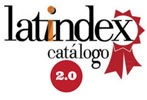Effectiveness of interactive whiteboards in the teaching-learning process: A meta-analysis of empirical studies
DOI:
https://doi.org/10.62943/rck.v2n2.2023.45Keywords:
Interactive digital whiteboards, teaching, learning, effectiveness, metaanalysisAbstract
The meta-analysis carried out on the effectiveness of interactive digital whiteboards in the teaching-learning process reveals promising results. After analyzing a wide range of empirical studies, there is a consensus regarding the positive impact of these technological tools on improving student engagement, participation and academic performance. It should be noted that approximately 80% of the studies reviewed report a significant increase in student participation when using interactive digital whiteboards, thanks to its visually stimulating nature and its ability to encourage interaction in the classroom. In addition, about 75% of studies show notable improvements in learning outcomes, especially in areas such as math and science. It is also identified that the use of these blackboards facilitates the long-term retention of information, with about 65% of studies indicating a greater memory capacity by students. However, there are challenges related to teacher training and technical problems that may affect the effective implementation of these technologies in the classroom. Finally, this meta-analysis highlights the potential of interactive digital whiteboards as valuable tools to enrich the educational experience and improve learning outcomes, while stressing the importance of adequately addressing the challenges associated with its use.
References
Angulo Mendoza, G. A., & Papi, C. (2016). Comunidades en línea como apoyo a los investigadores en formación: una propuesta conceptual a partir del estado del arte. Ubiquitous Learning: An International Journal, 437-438.
Area-Moreira, M., & Adell-Segura, J. (2021). Tecnologías digitales y cambio educativo. Una aproximación crítica. DOI: https://doi.org/10.15366/reice2021.19.4.005
Blanco Gracia, R., Buzunáriz, M., & Ángel, M. (2018). Juegos educativos para las matemáticas y su eficacia para el aprendizaje. Un ejercicio de aplicación de la revisión sistemática y meta-análisis.
Burgueño López, J. (2019). La relación profesor-alumno en la metodología «Flipped Classroom».
Casado, E. M. P., Gutiérrez, R. C., Somoza, J. A. G. C., Casado, R. B. E. M. P., & Gutiérrez, R. C. (2018). Incidencia de la Realidad Aumentada en la enseñanza de la historia: una experiencia en tercer curso de Educación Primaria. 23-39. DOI: https://doi.org/10.14201/et20183612339
Chávez Delgado, M. E., González Vergara, S., & Sepúlveda López, F. (2022). Revisión sistemática de literatura sobre programas de intervención en habilidades de lectura inicial. Páginas de Educación, 15(2), 98-127. DOI: https://doi.org/10.22235/pe.v15i2.2775
Colomo-Magaña, E., Gabarda Méndez, V., Cívico-Ariza, A., & Cuevas Monzonís, N. (2020). Percepción de estudiantes sobre el uso del videoblog como recurso digital en educación superior. DOI: https://doi.org/10.12795/pixelbit.74358
García-Valcárcel A., & Muñoz-Repiso, A. (2016). Recursos digitales para la mejora de la enseñanza y el aprendizaje.
Gómez, A. S. H., Pérez, E. H. C., & Trejo, I. M. (2019). Plataformas digitales en la educación a distancia en México, una alternativa de estudio en comunicación. Revista de Educación a Distancia (RED), 19(60). DOI: https://doi.org/10.6018/red/60/07
Guamán Jácome, J. J. (2018). Estrategias tecnológicas educativas y su incidencia en la enseñanza aprendizaje de los estudiantes en el tercer año de la unidad educativa “José Rodríguez lavandera”, cantón Quevedo, provincia de los Ríos (Bachelor's thesis, Babahoyo: UTB, 2017).
Guaña-Moya, E. J., del Rosario Llumiquinga-Quispe, S., & Ortiz-Remache, K. J. (2015). Caracterización de entornos virtuales de enseñanza aprendizaje (EVEA) en la educación virtual. Ciencias Holguín, 21(4), 1-16.
Impulso06. (2023, April 26). Aplicaciones prácticas de la pizarra interactiva en el aula. Impulso06. https://impulso06.com/aplicaciones-practicas-de-la-pizarra-interactiva-en-el-aula/.
Jerez Montoya, T. (2017). Uso de la pizarra digital interactiva en centros bilingües: claves para el diseño de un itinerario formativo integrado.
López Díaz, M. (2022). Cuentos interactivos digitales en el aula de Educación Infantil.
Lucero, L. F. P. G. (2016). Departamento de posgrado (Doctoral dissertation, Universidad de Cuenca).
Meza, J. A. D., Castro, M. L. C., Vivas, R. V. J., & Rueda, A. C. C. (2020, June). Herramientas de aprendizaje colaborativo soportado por computador utilizadas en programas virtuales de educación superior: Una revisión sistemática de la literatura en Iberoamerica. In Iberian Conference on Information Systems and Technologies, CISTI, June (pp. 24-27).
Montoya, T. J. (2017). TITULO: Uso de la pizarra digital interactiva en centros bilingües: claves para el diseño de un itinerario formativo integrado.
Morales, J. M. C., Morales, D. M. C., Moya, J. G., & Zambrano, K. A. M. (2022). La educación y los entornos virtuales de aprendizaje. AlfaPublicaciones, 4(1.2), 78-90. DOI: https://doi.org/10.33262/ap.v4i1.2.186
Quintana Muñoz, J. J. (2019). Relación entre las competencias digitales docentes y la integración de las tecnologías de la información y comunicación en la enseñanza del idioma inglés como lengua extranjera.
Rojas, I. B., Larrea, V. A., & Olariaga, L. M. J. (2017). Metodología de enseñanza en centros eficaces de la Comunidad Autónoma del País Vasco. Revista de Investigación Educativa, 35(1), 93-112. DOI: https://doi.org/10.6018/rie.35.1.225141
Tronchoni Albert, H. (2019). Estudio observacional de la comunicación multimodal en el aula universitaria: Contextos y estructuras de participación discursiva en las sesiones magistrales.
Published
How to Cite
Issue
Section
License
Copyright (c) 2023 Michelle Talía Arguello Mogrovejo

This work is licensed under a Creative Commons Attribution 4.0 International License.
Authors who publish with this journal agree to the following terms:
- Authors retain copyright and grant the journal right of first publication with the work simultaneously licensed under a Creative Commons Attribution License 4.0 that allows others to share the work with an acknowledgement of the work's authorship and initial publication in this journal.
- Authors are able to enter into separate, additional contractual arrangements for the non-exclusive distribution of the journal's published version of the work (e.g., post it to an institutional repository or publish it in a book), with an acknowledgement of its initial publication in this journal.
- Authors are permitted and encouraged to post their work online (e.g., in institutional repositories or on their website) prior to and during the submission process, as it can lead to productive exchanges, as well as earlier and greater citation of published work.











